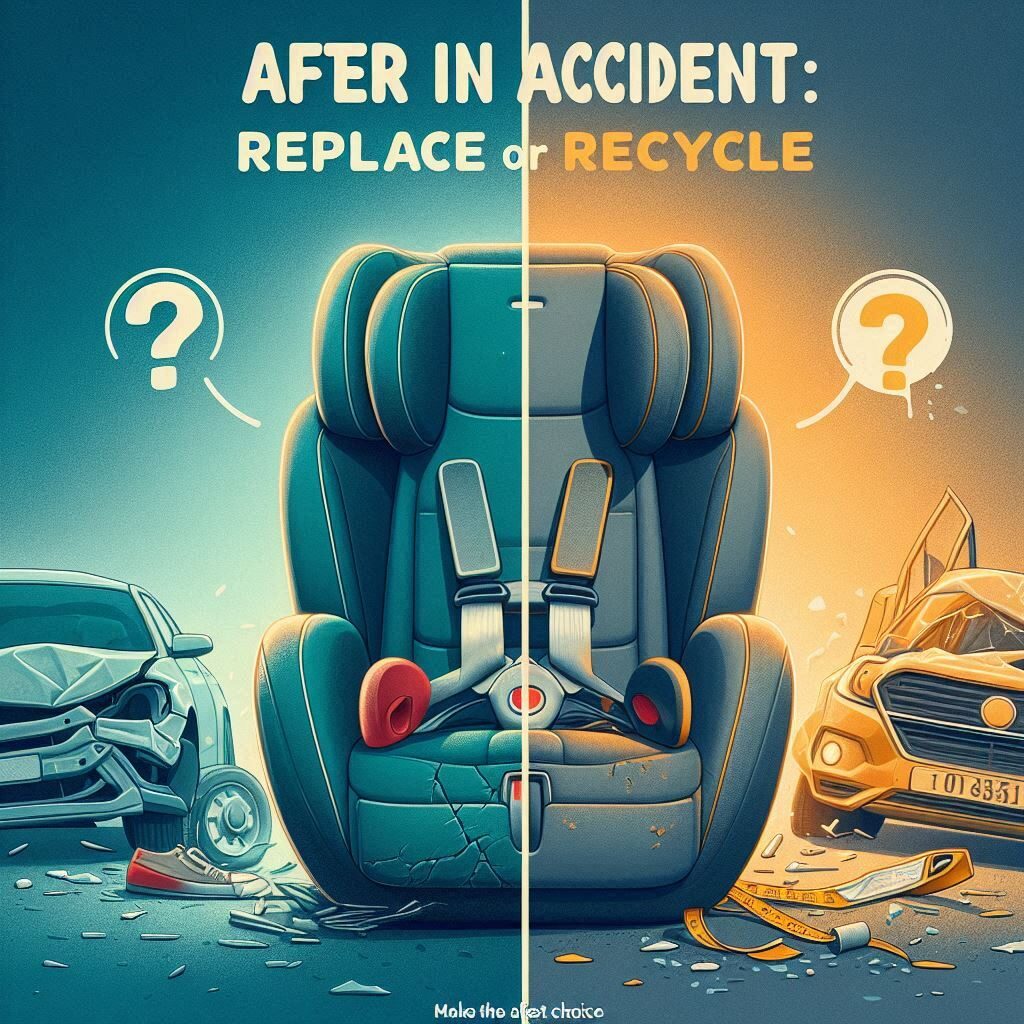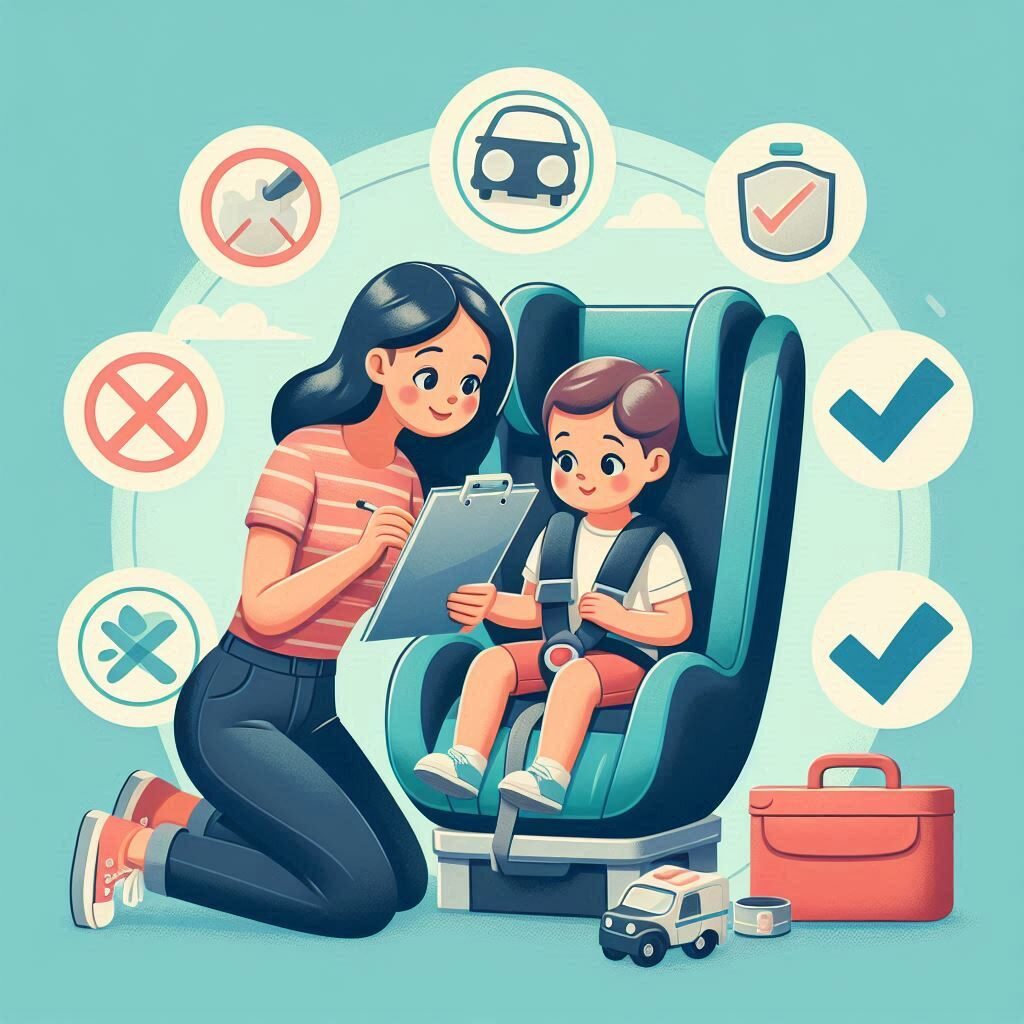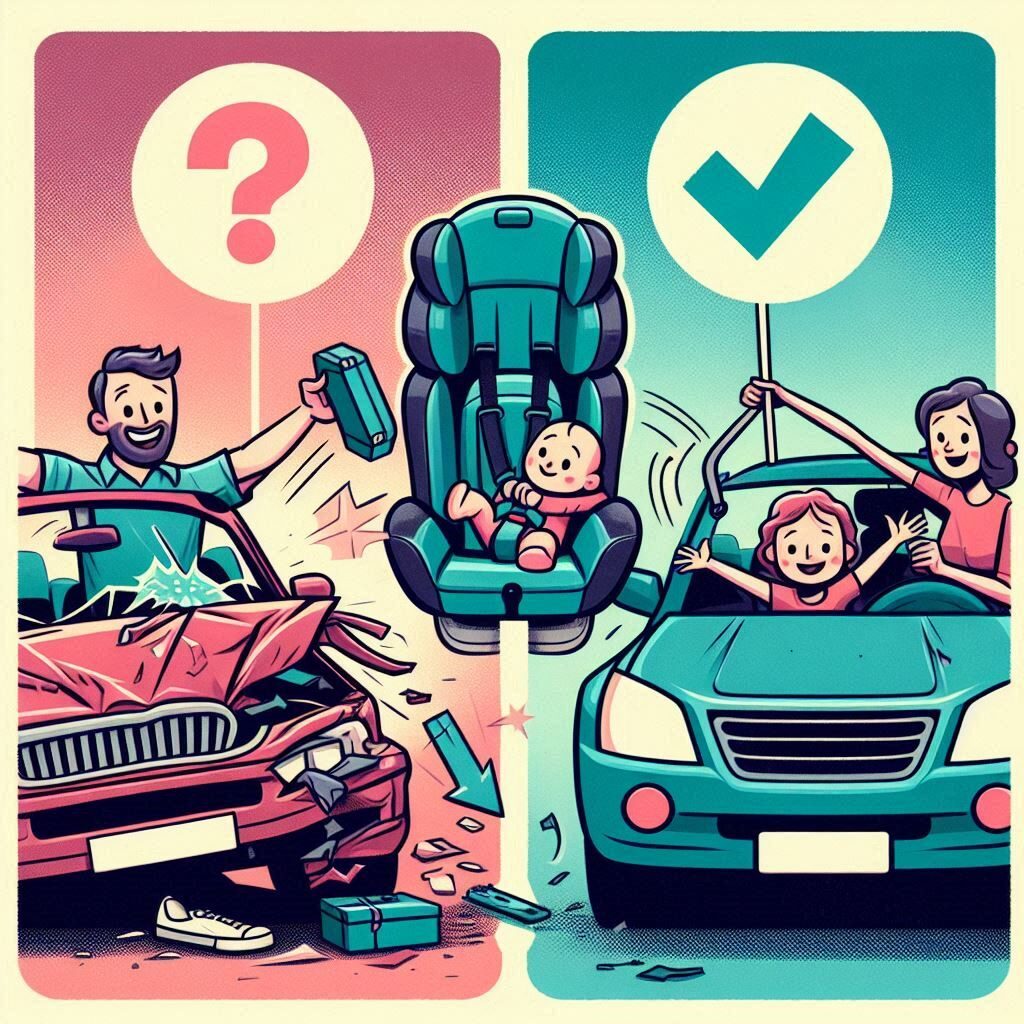What To Do With Car Seat After Accident?

As a Child Passenger Safety Technician (CPST), I witness the incredible impact car seats have on protecting our most precious cargo every day. But what happens after a bump in the road, even a seemingly minor fender bender? This question recently hit close to home.
A concerned parent, Sarah, reached out to me after a minor accident. Thankfully, everyone was okay. However, Sarah noticed a small crack in her infant car seat’s shell. Unsure if it was safe to use again, she felt a pit in her stomach—a common feeling among parents after even minor car seat incidents.
This story, and countless others, highlight the crucial yet often overlooked aspect of car seat safety: what to do with your car seat after an accident. Here’s the thing: even minor bumps can cause hidden damage, compromising your child’s safety in a future collision.
In this guide, I’ll share my expertise as a CPST to help you navigate this situation. We’ll explore when to replace your car seat, how to inspect for damage, and responsible disposal options for used car seats. By the end, you’ll have the knowledge to make an informed decision about what to do with your car seat after an accident, ensuring your child’s safety remains a top priority.
Why Replace Your Car Seat After an Accident?
Imagine a car seat as a suit of armor for your child. During an accident, the car seat absorbs the impact forces, protecting your little one. However, even minor bumps or vibrations can cause unseen damage.
- Hidden Damage: Accidents can cause invisible cracks or tears in the car seat’s plastic shell or harness straps. These might not be readily apparent, but they could affect its performance in another way.
- Compromised Strength: The internal components designed to absorb crash forces might be damaged, reducing the seat’s ability to safeguard your child.
When to Replace Your Car Seat
Here are some general guidelines for car seat replacement after an accident:
- Always replace the car seat:
- If your child was in the car seat during the accident, regardless of the severity.
- If the car seat was hit directly or exposed to airbag deployment.
- Consider replacement:
- Even in a minor collision, if you’re unsure about the extent of damage, consult your car seat manual for specific guidelines.
What to Look For When Inspecting Your Car Seat

Don’t take chances with your child’s safety. Here’s how to inspect your car seat for potential damage:
- Cracks or Tears: Carefully examine the car seat shell, harness straps, and buckle for any visible cracks, tears, or loose stitching.
- Deformation: Look for any warping or permanent bending of the car seat frame or base.
- Harness Functionality: Ensure the harness retracts smoothly and tightens securely. Check if the buckle releases and fastens properly.
- Expiration Date: Regardless of the accident, always check the car seat’s expiration date. Expired car seats may have degraded materials, compromising safety.
Does Insurance Cover Car Seat Replacement After an Accident?

Car insurance coverage for car seat replacement after an accident varies depending on your policy and the specific circumstances. Here’s a breakdown:
- Collision Coverage: This type of coverage typically covers damage to your car caused by a collision. Some policies might extend coverage to car seats if they were damaged in the accident.
- Comprehensive Coverage: This coverage protects your car from non-collision incidents like theft, vandalism, or weather damage. It’s less likely to cover car seat replacement unless the damage is extensive.
- Third-Party Liability: This coverage pays for damages caused to others in an accident you are at fault for. It does not cover your car or your car seat.
Here are some steps to take if you want to see if your insurance covers car seat replacement:
- Review your car insurance policy: Carefully read your policy documents to understand the specific coverage details.
- Contact your insurance company: Call your insurance provider and explain the situation. They can advise you on your coverage options and any necessary steps to file a claim.
Important Note: Even if your insurance doesn’t cover car seat replacement, prioritizing your child’s safety comes first. Consider replacing the car seat if there’s any doubt about its integrity.
What to Do With Your Old Car Seat

Don’t pass an old car seat on after an accident. Here are some responsible disposal options:
- Check with your local recycling center: Some recycling programs might accept car seat components (check material type requirements).
- Contact your car seat manufacturer: Some manufacturers offer recycling programs for old car seats.
- Safely dismantle and dispose: If recycling isn’t an option, dismantle the car seat by removing the fabric and straps. Dispose of the metal and plastic components responsibly, following your local waste disposal guidelines.
Important Note: Never attempt to sell or donate a car seat that has been in an accident.
Here are some resources from trusted organizations to learn more about child passenger safety:
- National Highway Traffic Safety Administration (NHTSA)
- National Child Passenger Safety Board (NHTSA)
- American Academy of Pediatrics (AAP)
- Safe Kids Worldwide
Specific Examples of Car Seat Damage Requiring Replacement
This section is included to help you identify car seat damage that’s severe enough to warrant replacement after an accident. Here are some specific examples:
- Deep scratches or gouges in the plastic shell: Look for significant scratches or gouges, especially near areas that experience a lot of force during a crash, like the harness attachment points. These areas are crucial for keeping your child secure, and deep damage could compromise their effectiveness.
- Visible cracks in the shell or base: Even small cracks in the car seat’s shell or base can be a sign of internal damage. Cracks weaken the structural integrity of the car seat, potentially reducing its ability to protect your child in a future accident.
- Malfunctioning buckles or harnesses: A car seat’s buckle and harness are vital for keeping your child securely restrained. If the buckle doesn’t fasten properly, releases too easily, or the harness doesn’t tighten securely, it’s a red flag, and the car seat should be replaced.
- Permanent warping or bending of the car seat frame: The car seat frame should be sturdy and stable. If the frame is warped or bent permanently due to the accident, it might not be able to provide adequate protection in another collision.
Car Seat Types
While the overall principles of car seat replacement after an accident apply to all types, here are some brief considerations for different car seat categories:
- Infant Car Seats: These are designed for newborns and smaller babies. Due to their crucial role in protecting fragile bodies, any suspected damage or even a minor accident warrants replacement.
- Convertible Car Seats: These offer extended use from infancy to toddlerhood. Replacement is recommended after an accident if the car seat was in use or directly impacted.
- Booster Seats: These provide additional support and positioning for older children. Replacement might be necessary if the booster seat was struck or shows signs of damage like cracks or loose components.
Travel Tips
Regardless of whether you’ve been in an accident, it’s crucial to always use a car seat correctly every time your child is in the car. Here are some reminders:
- Choose the right car seat for your child’s age, weight, and height.
- Ensure the car seat is securely installed in your vehicle, following the manufacturer’s instructions and your car’s manual.
- Always properly buckle your child into the car seat with a snug harness fit.
FAQs
Q: I wasn’t in a major accident, but my car seat seems a little loose. Should I still replace it?
A: Even minor bumps or vibrations can potentially compromise the car seat’s structural integrity. It’s best to err on the caution side. If the car seat feels loose or wobbly, or you suspect any damage, prioritize your child’s safety and replace it.
Q: Can I get a discount on a new car seat after an accident?
A: Some car seat retailers might offer discounts on replacements after an accident. It’s worth contacting your preferred retailer to inquire about their policies.
Q: What if I can’t afford a new car seat right away?
A: If replacing the car seat immediately creates a financial hardship, prioritize not using the damaged seat. You can explore temporary solutions:
- Borrow a car seat: Check with friends, family, or local community organizations for a safe, undamaged car seat to borrow temporarily.
- Contact local resources: Some social service agencies or car seat safety programs might offer car seat assistance in such situations.
Important Note: Always prioritize your child’s safety. Never use a damaged car seat, even temporarily.
Conclusion
By understanding the importance of car seat replacement after an accident and following these guidelines, you can ensure your child travels with the best possible protection. Remember, prioritizing safety is an investment in your child’s well-being.
This comprehensive guide empowers you to make informed decisions about your car seat after an accident. We hope this information proves valuable and helps you keep your precious cargo safe on every journey.
